Date: 28 February 2016 Temperature: 24ºC Weather: Sunny and slightly cloudy
On the second day of our Florida trip we visited the Arthur R. Marshall Loxahatchee National Wildlife Refuge where we were met by Mark Cook who works for the South Florida Water Management District and is also a former student of Bangor University. Mark gave us a tour of the reserve and talked to us about management of the reserve and of the Loxahatchee Impoundment Landscape Assessment (LILA).
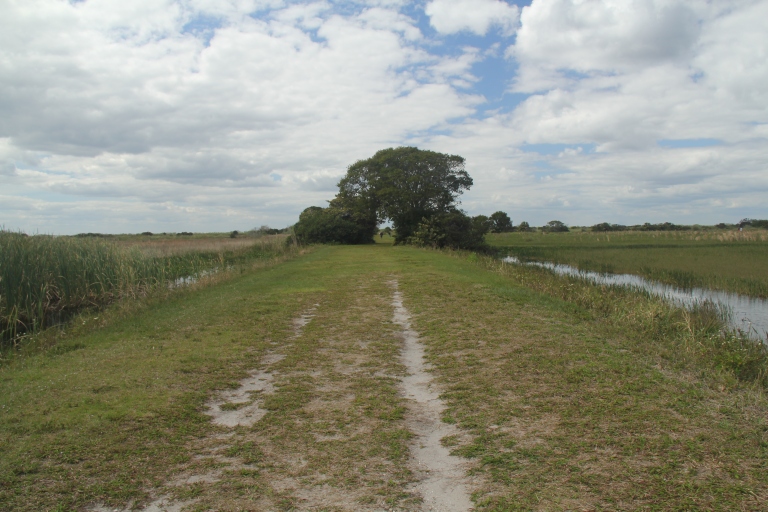
Habitats and their management
The 143,954 acre refuge was established in 1951 under the Migratory Birds Conservation Act through a licensing agreement between the U.S. Fish and Wildlife Service and the South Florida Water Management District. The refuge is composed slough, wet prairie, saw grass ridge, cypress swamp tree islands and cattail communities (Typha spp.). A tree island forms when patches of peat rise to the surface and small plants followed by trees and shrubs established on the peat.
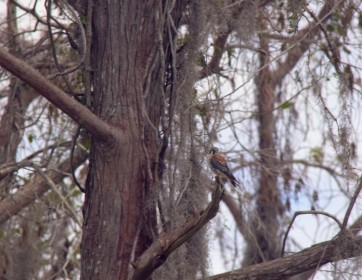
The refuge is also the only remnant of the northern Everglades in Palm Beach, Florida which were lost as part of the approximately 50% of the Everglades that have been lost to development. What remains is now fragmented due to human activities such as road and ditch construction leaving the hydrology compartmentalized.
Management of the refuge focuses heavily on the control of fire, water and invasive species. All of the park management is done by refuge staff and volunteers such as the Friends of the Arthur R. Marshall Loxahatchee National Wildlife Refuge.
Fire
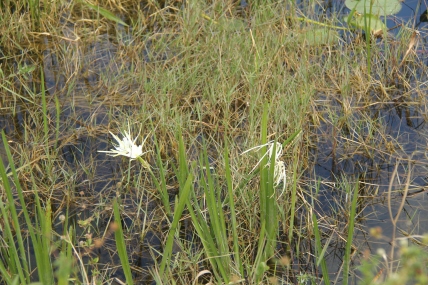
Much like the Merritt Island National Wildlife Refuge that we visited on Day 1, the Loxahatchee refuge employs prescribed burns to maintain the habitat for wildlife through inhibiting the growth and spread of trees that would turn the marsh and wet prairie into swamps. Fires also encourage the emergence of new plants and aid in nutrient cycling in a naturally nutrient-poor environment.
Water
Water management of the refuge focuses on limiting nutrient inputs into the water from the surrounding agricultural activities. Although cattails are a native plant, nutrient enrichment is causing them to outcompete the sawgrass communities. Research projects such the project that Mark is working on looking at the removal of nutrients through the controlled growth and removal of cattails. The project is trying to identify a way of also controlling the positive feedback loop cattails have on phosphorous to help potentially return the nutrient levels in the water to less than 10ppm.
Invasive species
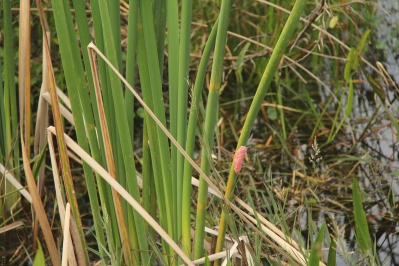
Much like many parts of the world, Florida has a problem with invasive species. However, in Florida this problem is significant because the climate in the region makes it ideal habitat for many invasive species to thrive.
In the Loxahatchee refuge the focus is to control plants such as the Brazilian pepper (Schinus terebinthfolius) and the Australian pine (Casuarina species) which are highly invasive and can shade out and outcompete native vegetation. They are controlled through the use of herbicides, the use of machinery, hand pulling, prescribed fire and in certain cases the introduction of biological controls such as insects.
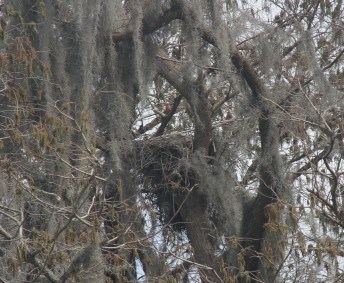
Additionally, the refuge has invasive animal species such as the Cuban tree frog (Osteopilus septentrionalis), the Burmese python (Python bivittatus) and the island apple snail (Pomacea insularum) which is direct competition with the Florida apple snail (Pomacea paludosa). Once they were pointed out to us, we noticed that the pink egg clutches of the island apple snail were found on most surfaces varying from plants to cement.
However, not all invasive species are entirely detrimental to the area and it is believed the island apple snail is (Rostrhamus sociabilis) helping the endangered snail kite (Rostrhamus sociabilis) population because the population of the Florida apple snail are currently down.
Wildlife
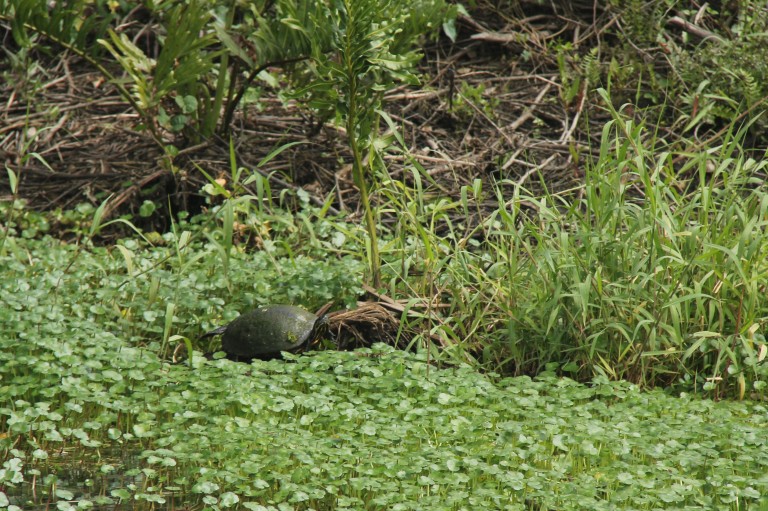
The Loxahatchee refuge is home to over 250 bird species and several mammals, amphibians and reptiles. Some of the wildlife we saw while visiting the refuge included an American kestrel (Falco sparverius) and a Great horned owl (Bubo virginianus) chick well camouflaged in the nest that its parents would have stolen from another bird. We also heard the call of a southern cricket frog (Acris gryllus) which sounds like two marbles clicking together.
LILA
The LILA project is 80 acre model of the Everglades ecosystem made up of four cells. This “living laboratory” allows research to be conducted to determine how to sustain a healthy Everglades ecosystem. The hydrology of the cells are controlled by levees, electric pumps and water gauges that generate 2800 hydrological data points a day so that the water levels can be actually controlled.
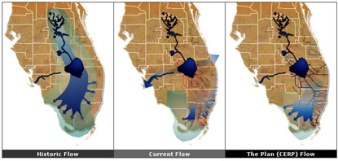
Currently the hydrology of the Everglades is managed for an average year; however, scientist do not know how the hydrology truly functioned prior to human changes. The primary focus of the research in LILA is to determine the hydrologic regimes of a sustainable ecosystem including tree islands, ridge and slough and everglade bird communities.
A recent published study from the LILA project looked at how drought affected wading bird populations and their prey. The study identified that fish are in direct competition with the birds for crayfish and that drought helps to control fish populations which in turn reduces competition for birds.
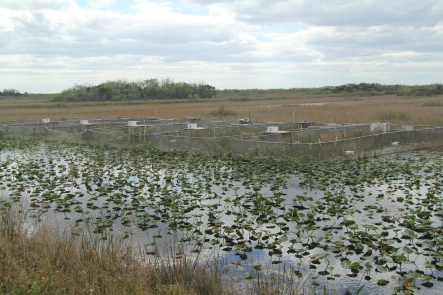
A current research project is trying to determine how to protect native fish from the approximately 65 introduced fish species in southern Florida through the use of fish cages.
The highlight of the day was meeting Mark and Ben and finding out about all of the interesting and innovative research they are conducting that could potentially help protect the future of the Everglades.
References
Friends of the Arthur R. Marshall Loxahatchee National Wildlife Refuge Unknown. Projects : Loxahatchee Impoundment Landscape Assessment – LILA. [Online]. Available at: https://loxahatcheefriends.com/projects/projects.shtml. Accessed: March 24 2016.
South Florida Water Management District Unknown. Everglades project – Loxahatchee Impounded Landscape Assessment (LILA). [Online]. Available at: http://www.sfwmd.gov/portal/page/portal/xrepository/sfwmd_repository_pdf/lila.pdf. Accessed: March 24 2016.
U.S. Fish & Wildlife Service 2015. Arthur R. Marshall Loxahatchee National Wildlife Refuge. [Online]. Available at: http://www.fws.gov/uploadedFiles/2015LoxTearsheet.pdf. Accessed: March 25 2016.
U.S. Fish & Wildlife Service 2015. Arthur R. Marshall Loxahatchee National Wildlife Refuge : Habitats. [Online]. Available at: http://www.fws.gov/refuge/ARM_Loxahatchee/wah/habitats/. Accessed: March 22 2016.
U.S. Fish & Wildlife Service 2015. Arthur R. Marshall Loxahatchee Wildlife Refuge : Resource Management. [Online]. Available at:http://www.fws.gov/refuge/ARM_Loxahatchee/what_we_do/resource_management.html. Accessed: March 23 2016.
